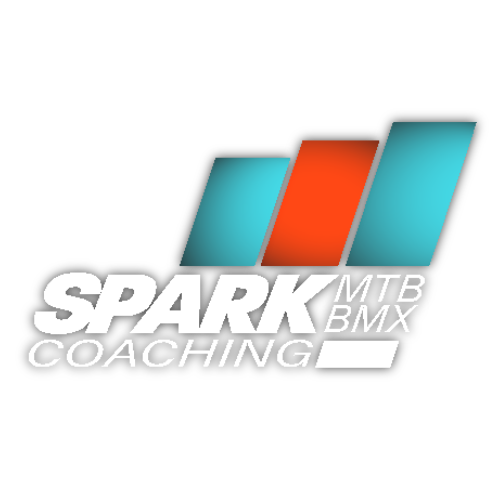The Sports Science of BUILDING POWER AND IMPROVING SPRINT TIMES
Want a little inside scoop into my training? I’m about to show you a few things that not many trainers/coaches will show you. In this article, I’ll give you some details on a block of training I did and some interesting and measurable results I got. Typically people assume bigger muscles from weight lifting must equal more speed on the bike. Most of the time those people are disappointed in the results. It’s critical that we work on the important things in the gym if we want to see improvements on the bike.
Let’s cut to the chase
This April I conducted a little experiment on myself. I started a new program I developed and wanted to see what kind of results I would get… and if they would do anything for my speed on a BMX bike. At the beginning, I tested vertical jump heights. I would have also tested sprint times right away but the weather in Illinois at that time just wasn’t having it, so I had to wait a week or two before I recorded my sprint times. I also did some testing to find my reactive strength index (more on this later) and establish a baseline of what I will call stiffness.
Below are just some of the tests I look at to help me understand what kind of athlete I’m working with. The performance tests also give me some feedback to let me know if the training we are doing is actually working or not.
Jump Results
So while jumping isn’t pedaling a bike, it is one indicator of performance potential. You should jump higher if you produce more power with the same body weight. Pedaling a bike is the same. The goal of any training program is to produce more power while moving the same body weight.
Average Sprint Results
With the chart above showing my jump results, we see the trend rising over time, meaning I’m jumping higher.
On this one, we want to see that trend down meaning it’s taking less time to get from the start to 50′ distance.
Reactive Strength
Another performance indicator that I tracked was my Reactive Strength Index (RSI). WTF is that you may be asking?! It’s a measure of your ability to create stiffness and use your elastic energy to jump. To test this you need to drop off a box, land and rebound into a maximal effort jump as quickly as possible. The amount of contact time it takes to produce the height of jump is how the RSI is calculated.
Although I said earlier that vertical jump did not necessarily mean you will pedal a bike any faster… If you notice that on my two graphs, as the vertical jump dips, my average sprint times rise. Towards the end where I see a noticeable rise in vertical jump heights, I also see faster 50′ sprint times.
So, maybe vertical jumps and/or our reactive strength index can be correlated to sprint speed…
What was I doing differently to get results?
I focused on improving my reactive stiffness. Reactive stiffness is what many great athletes seem to have. They have an amazing ability to turn on muscles super quick and relax when needed. Think of watching Connor Fields ride a bike or Micheal Jordan drive to the basketball hoop.
In an effort to find my weakness by using some performance tests, I found that my Reactive Strength Index test was pretty below average. Over 3.0 is considered to be elite level in some circles. Mine started out at 1.75 and at the end of my block of training was up to 2.57. During that time my vertical jumps went from approx 15.5″ to 18.5″ and most importantly I dropped around .15 seconds to 50′ or what amounts to approximately 3/4 of a bike!
My dominant physical trait is the ability to produce Force (brute strength), but unfortunately, not particularly quickly. I found that my isometric transition (the moment where you stop going down to going up into a jump for example) was particularly slow. In sports, you don’t have time to be slow. You need to be efficient in every movement.
I think our reactive strength is one of the big things that often goes untrained, particularly in adults. Usually, adult racers are force-dominant athletes rather than Velocity-dominant. They are like a semi-truck with a lot of torque. While that pencil-thin teenager (Velocity dominant) in the gate can smoke you. He doesn’t weigh much and has the ability to turn on his power very quickly.
You may think that to achieve faster movements, I need to train faster movements right? Well, yeah kinda but you may be surprised to find that what I really focused on during the 5 weeks was moving slowly, or not at all.
People are missing out on training a huge piece of the puzzle. Did you know that you can eccentrically handle somewhere between 20 – 60% more force than concentrically? Isometrics are also vastly undertrained by athletes. In fact, It’s one of the best ways to get someone strong really quickly.
After building a substantial base of strength in the eccentric and isometric phases, we can now go back and focus on improving our acceleration with a concentric emphasis. As you put all three of these movements together, you will notice a big boost in power off the bike and hopefully on the bike as well.
WANT TO LEARN MORE?
If you’re interested in incorporating some of the things I just mentioned, you may want to check out my program, MASTERS MOBILITY & SPEED. It is designed for the more seasoned veterans of our sport. It’s a program that heavily focuses on maintaining and improving power. I’ve also made sure to include a lot of mobility and restorative exercises to keep you feeling healthy.




